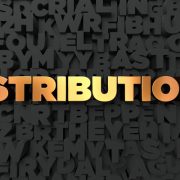Does a Self-Directed IRA Help in Addition to Social Security?
Social security has been around for decades, and many Americans have come to rely on the steady income it provides. But today’s generation is not so sure about what the future holds. They may believe that their own social security benefits may not be sufficient enough to fund a retirement—or even make a significant dent. With this in mind, does a Self-Directed IRA offer unique protection for people who are concerned about building a fixed income in retirement? Let us look at the various aspects of the Self-Directed IRA to answer this question.
Building Fixed Income in Retirement
There are multiple strategies to build fixed income in retirement, and many people rely on social security for that fixed income. Other fixed income strategies include bonds, dividend-paying stocks, real estate, and more. For many traditional retirement arrangements, bonds are one of the most common ways that people achieve fixed income to help bolster their retirement. The problem is that these days, many bonds offer surprisingly low yields. That means that the dollar you have saved for retirement simply will not stretch as far as it used to—not if you are looking to buy income through bonds. (Note: we cannot make specific predictions about where markets are headed, or where investors should put their money).
Real estate is a common strategy for investors who want to diversify out of something like bonds and build fixed income. Because an investor can own a real estate asset within a retirement portfolio through a Self-Directed IRA, it is possible to direct steady cash flow through that account, which means it is put towards retirement.
For many investors, using a real estate strategy means that they will be able to have a relatively predictable income—provided their investments are full of rent-paying tenants. This also helps them separate and untether from the stock market as a sole source of success in retirement.
Is Social Security Here to Stay?
One thing that many investors are concerned about is the possibility that social security may not be a reliable source of income for them in retirement, for a variety of reasons. For some people, it may be that social security that they earn throughout their life is not sufficient to meet their needs upon retirement. And because people get to choose whether to take social security early or late, some people who take it early may be forced to do so because of their unique financial circumstances.
Investors who are interested in building a stable income for retirement do have to be aware of the things they can do throughout their life to build a retirement nest egg. For example, a Self-Directed Roth IRA is a powerful way to put aside money that can continue to grow even after retirement age. This is because the money in a Roth IRA is taxed already; a contribution to a Roth IRA is not tax-deductible. That money already being considered taxed, it is allowed to grow within a Roth IRA without required minimum distributions after reaching retirement age.
The effect? Anyone who wants to let their Roth IRA grow more after retirement age can do so, even when collecting social security. This gives them some flexibility to grow in retirement assets even while experiencing the additional income of social security.
But every investor’s situation is different. Different investors have to choose different strategies. And because American IRA is not a financial advisory firm, but a Self-Directed IRA administration firm, we do not give specific advice on which investments people can buy. However, we do educate people about retirement.
Interested in learning more about Self-Directed IRAs? Contact American IRA, LLC at 866-7500-IRA (472) for a free consultation. Download our free guides or visit us online at www.AmericanIRA.com.









